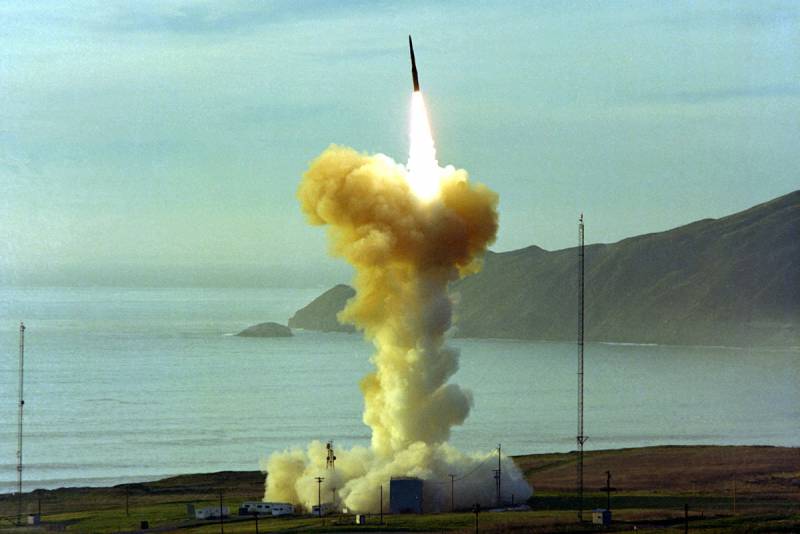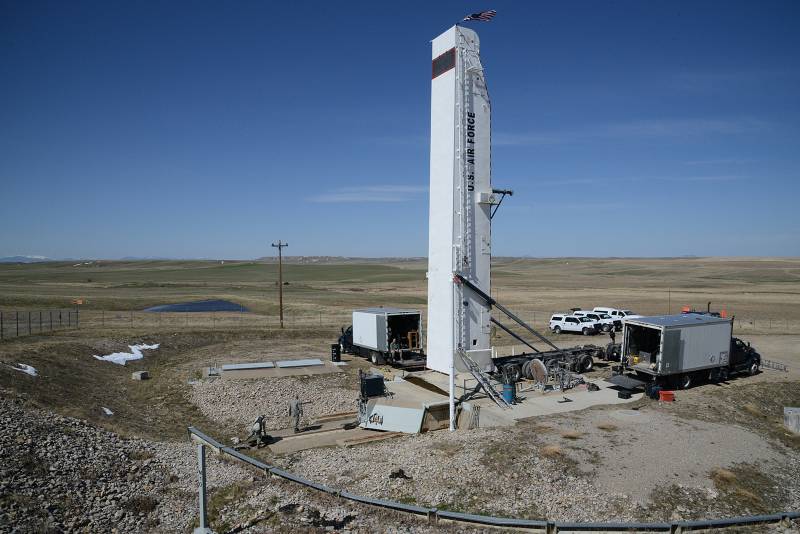Minuteman III - the weak link of the American nuclear triad
"Relics of the Cold War"
Anxiety about the weak combat capability of the American nuclear weapons was raised by the Pentagon back in 2018.
In the annual review of nuclear policy, the military said bluntly that
Such a flattering assessment for the Russian Ministry of Defense should not be taken too personally.
On the one hand, military analysts overseas may indeed be worried about Russia's increased power. On the other hand, it may turn out to be another trick for knocking money out of the US Congress and, ultimately, from taxpayers. Such horror stories have long been an excellent tool for manipulating American public opinion. Suffice it to recall the not too sophisticated propaganda before the invasion of Iraq and the famous glass pieces by Colin Powell.
It is noteworthy that in Russia it is considered a rule of bad form to admit lagging behind in the military sphere. Sometimes the media do not sense boundaries and call almost every new product in the Russian military-industrial complex "unparalleled in the world."
The April rhetoric of the US Strategic Command Commander, Admiral Charles Richards, in this regard, continues the tradition of washing dirty linen in public for public discussion. At one of the briefings, Richardson announced the hazy future of the LGM-30G Minuteman III ICBM.
Let's make a reservation that at the very beginning stories the admiral, so as not to discredit the country's nuclear potential, assured everyone of the absolute reliability of all silo-based missiles. And then there was a talk about the rapid obsolescence of the "relics of the Cold War" that have served the United States for over 50 years. Several consequences follow from this.
First, it is becoming more and more difficult and expensive to maintain missiles in combat readiness. Old technology constantly requires increased attention.
Secondly, no one can give real guarantees of the reliability of such relics in conditions of combat use.
Thirdly, some components for Minuteman III are no longer available.
It is not entirely clear how such a situation could have been allowed in the US military department at all? Boeing's lead rocket designer fulfilled the contract in 1978 and forgot to maintain the country's nuclear shield? Or did the Pentagon not have enough funds to finance warranty and post-warranty repairs? In any case, this is a typical example when private corporations are engaged in the development of strategic weapons for the country. Even if the competitive basis allows you to choose the best. As soon as a project becomes unprofitable from a financial point of view, private traders turn away from government orders.
Of course, this example is a little exaggerated, but it will help to understand the situation with the American Minuteman III missiles. At least based on the words of the first person in the strategic command of the United States. Richardson assures that some of the components of the rocket are generally impossible to reproduce now. And the Americans are not going to take Minuteman III off duty tomorrow or even the day after tomorrow.
In fairness, it is worth noting that the Pentagon has repeatedly extended the mine life of ballistic missiles. Since the mid-90s, the missiles have been replaced in parts by parts - navigation equipment, fuel and even warheads. So, in 2009, in Minuteman, they transplanted the nuclear filling from the decommissioned giants - "peacekeepers" LGM-118 Peacekeeper. But the missile did not undergo fundamental upgrades.
Awaiting replacement
The Minuteman III is the only land ballistic missile in the United States. In total, there are about 450 missiles on alert now, which are evenly distributed in the mines of the three American states - North Dakota, Wyoming and Montana. Each of the three missile warheads carries a charge of 300 or 335 kilotons. For comparison: one domestic RS-24 Yars can bring with it to the enemy up to ten warheads up to 500 kilotons each.
Despite the expiration of all warranty periods, Minuteman III is regularly tested. The last time this happened was before the presidential elections last year. Obviously, to raise the morale of the voters. But moral and technical obsolescence is making itself felt - in the XNUMXst century, at least half of the eight launches were unsuccessful. From the latter: in early May, at Vandenberg Air Force Base in California, another test launch was unsuccessful. This somewhat contradicts Richardson's words about his absolute confidence in the reliability of rockets here and now. Probably, the admiral even embellishes the real state of affairs.
In the United States, they understand the situation perfectly and have been working on the development of a replacement for the well-deserved Minuteman III for a couple of years. The name of this GBSD program is Ground-Based Strategic Deterrent and the main contractor is Northrop Grumman. Lockheed Martin, Textron Systems, Honeywell, Aerojet Rocketdyne, Bechtel, Clark Construction, Collins Aerospace, General Dynamics, HDT Global, Kratos Defense and L3 Harris are involved to solve local design problems. Boeing, the lead developer of the previous rocket, apparently did not make it to the top developer list at all.
Now the price tag of the new missile is approaching $ 100 billion, and the first samples of weapons in the operational readiness stage do not have to wait until 2029.
The Americans plan to fully replace all 450 Minuteman III only at the end of the 30s of this century. The warranty period of the new rocket should end around 2080. According to the developers, the weight and dimensions of the new product will not fundamentally differ from its predecessor. The program does not even include money for rebuilding the mine wells.
The novelty is not expected to have a dramatic increase in target power, but an increase in range and accuracy is expected. Experts are already saying that if the United States does not revise the GBSD concept, then the characteristics of the future missile will be significantly inferior to the Russian Sarmat.
The promising GBSD is not unique to the US nuclear shield.
Congress approved spending on the renewal of the entire nuclear triad in the amount of an astronomical $ 1,2 trillion. Of this amount, only slightly more than 8% is accounted for by promising silo-based ballistic missiles. Obviously, the overland component of the nuclear triad of the Americans in the role of a poor relative. As, however, until recently, and all ground forces.
Among the political elite of the United States, there is an opinion that ballistic missiles on the Ohio and Columbia submarines, as well as an air component from the B-52H, B-2 carriers and the promising B-21 Raider, will be enough for Washington to dominate the world. Former Secretary of Defense William Perry in 2016 bluntly stated the uselessness of all land ICBMs. This, they say, is a relic of the past. And Perry offered to spend the freed money on the fight against global terrorism and cyber attacks. In the same way, the Americans waited for the rapid obsolescence of their heavy armored vehicles - tanks Abrams and BMP Bredley.
The United States changed their minds in time and left their place for land nuclear missiles in the above-mentioned review of nuclear policy. In particular, they write in the review:
The Pentagon's words are slightly at variance with the deeds - the mentioned 8% of the "nuclear" budget for mine ICBMs is a confirmation of this.
But the commander-in-chief of the strategic command does not agree with such a modest place of ICBMs. Richardson reasonably remarked:
With the uneven development of all components, the triad loses its meaning. At the same time, an adversary with balanced triune forces can effectively oppose the United States even in the event of some technological lag.
Perhaps that is why Richardson, in his address to the public, did not forget to talk about the US lagging behind Russia in terms of the land component of the nuclear shield. And, it should be noted, here his words have every reason. According to the plans of the Russian Ministry of Defense, in three to four years, all Strategic Missile Forces formations will be 100% equipped with the latest technology.
The Minuteman III example perfectly illustrates the paradox of the world's largest defense budget. Americans spend a lot on the military (and there will be even more). But an extremely wide range of military interests will not allow the military department to balance.
Trying to fight against objectionable state regimes, Russia, China, terrorism, cyber threats, guerrillas and a lot of other things, the United States allows big holes in its defense. Which, of course, ill-wishers will take advantage of. Especially when the admirals of the Pentagon are talking about it.




Information